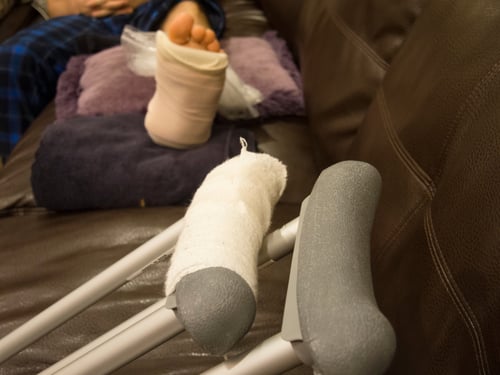
Also known as Hallux Valgus, a bunion is a foot condition that occurs when the big toe bends toward and pushes the smaller ones. It causes the joint to stick out, forming a painful soft tissue and a protruding bony bump at the base of the big toe.
If left untreated, bunions expose you to other conditions such as arthritis, and can be a source of embarrassment due to the deformity. The condition denies you the freedom to enjoy life due to the pain of wearing shoes or the shame of exposing your feet in public.
Bunions are Treatable
Non-surgical treatments can help to relieve the pressure and pain resulting from a bunion. They include medications, wearing comfortable shoes, padding, and tapping, and using shoe inserts.
However, non-surgical methods do not get rid of the condition, and that’s where bunion surgery comes in. Bunion surgery involves an incision on the toe joint to remove or realign the soft tissue or bone.
Pros of Bunion Surgery
- It works to relieve pain. Most patients who’ve had bunion surgery confessed that it helped to end their agonizing pain. The procedure is the secret to achieving long-term comfort and relief.
- More efficient compared to other methods. While there are many approaches to correcting the condition, nothing comes close to bunion surgery if the operation is done by a professional.
- It helps you increase your physical activities. As already pointed out, a significant number of people have a painful bunion. Since they cannot stand to go through the pain all the time, they tend to shy away from essential daily activities such as walking and exercising. With the surgery, they can approach life just like everyone else.
- Surgery boosts self-confidence. A bunion makes the big toe push toward the smaller ones, making the feet appear deformed. As a result, you’ll tend to shy away from removing shoes in public. Also, there are selected types of shoes that can work for you. Shoes and sandals that display your feet are out of the question. Surgery will help you become comfortable with your feet once again.
Cons of Bunion Surgery
Although bunion surgery offers several advantages, you should be open to the downsides that may result from undertaking this operation.
- Pain after the surgery. It takes time for your foot to heal completely, so you should expect some pain after a three-month duration if it’s not completely healed. Worse still, the bunion may reoccur after a year or so, which can be utterly disheartening.
- Not all bunion procedures are successful. The surgery will prevent you from wearing your usual shoes as the healing progresses. Also, much to your disappointment, a successful bunion procedure will most likely limit the shoe types and sizes you can wear.
Surgery can also result in numbness of the toes and the worst-case scenario: an infection. During the healing process, you’re likely to experience difficulties walking due to the pain experienced.
Having a bunion is a source of stress and embarrassment, and it contributes to low self-esteem. And it gets worse if it's painful and interferes with your daily activities. It's understandable to feel under intense pressure to find a solution.
Whatever you do, be sure to approach a foot specialist who can advise on the safest approach to treating the condition. If you settle on bunion surgery, it'll be successful if done by a surgeon who specializes in bunion treatment.






